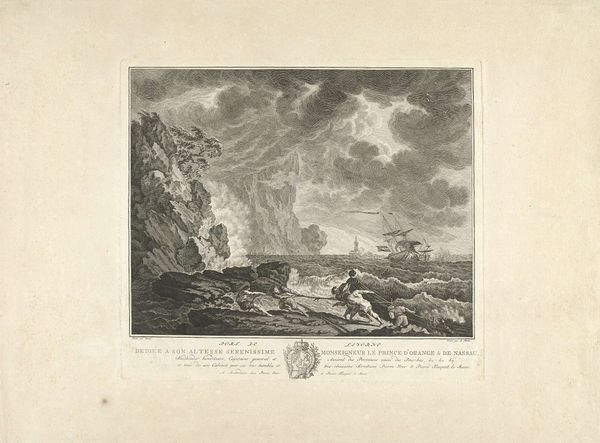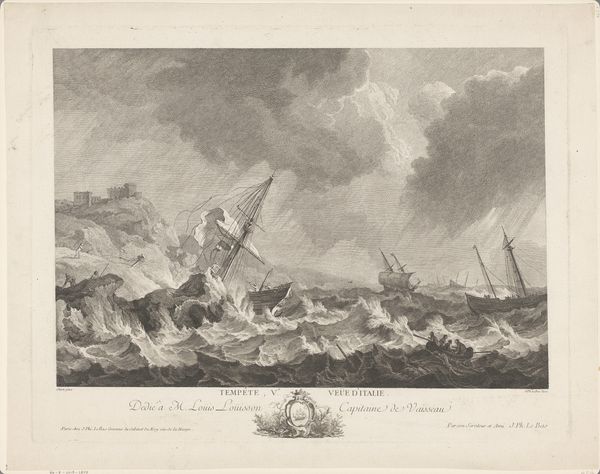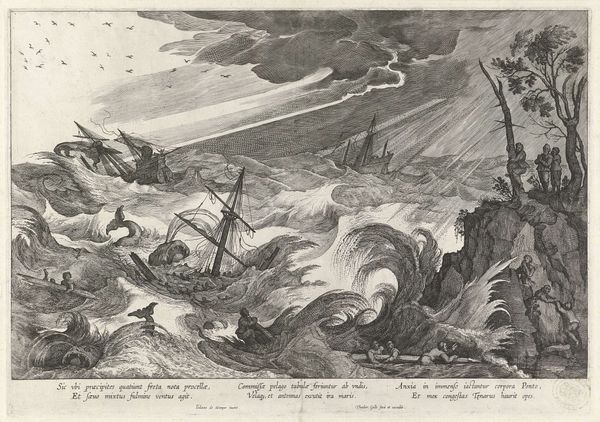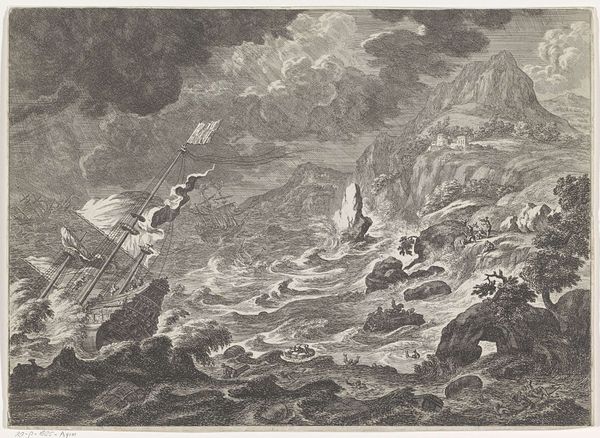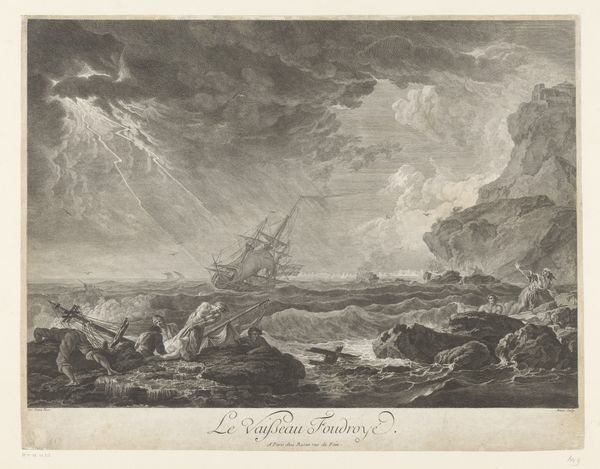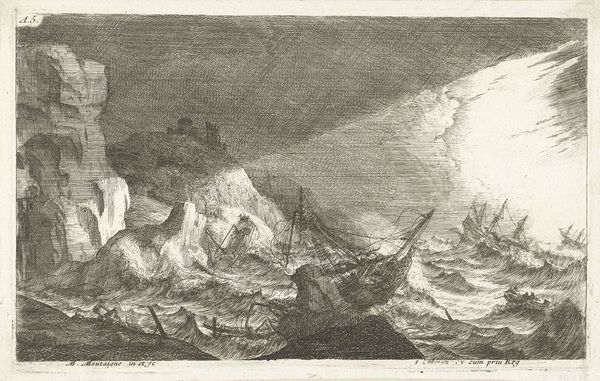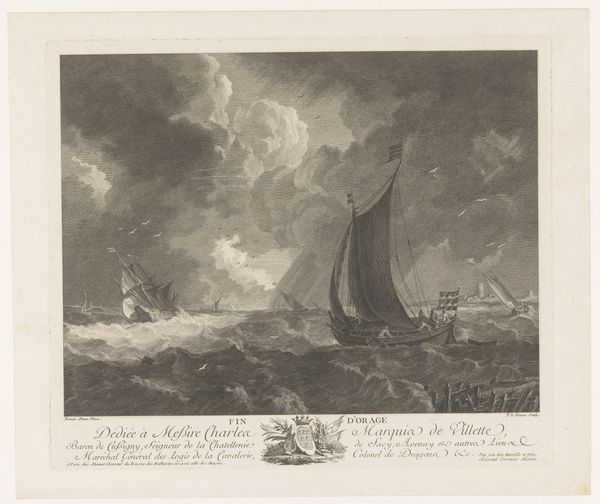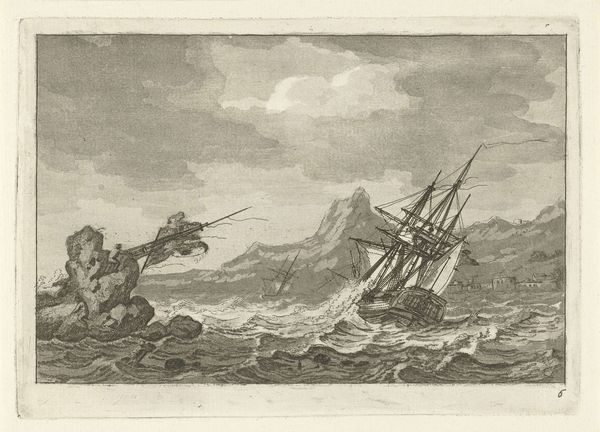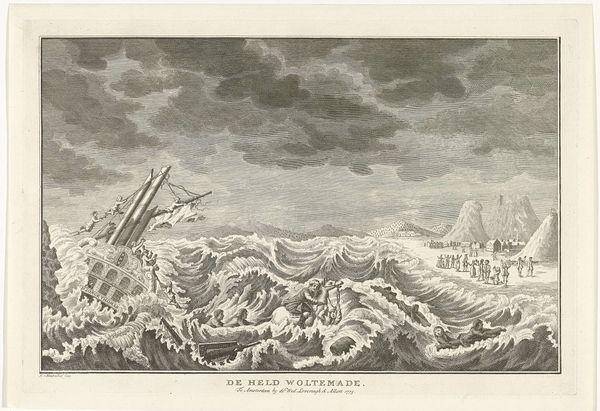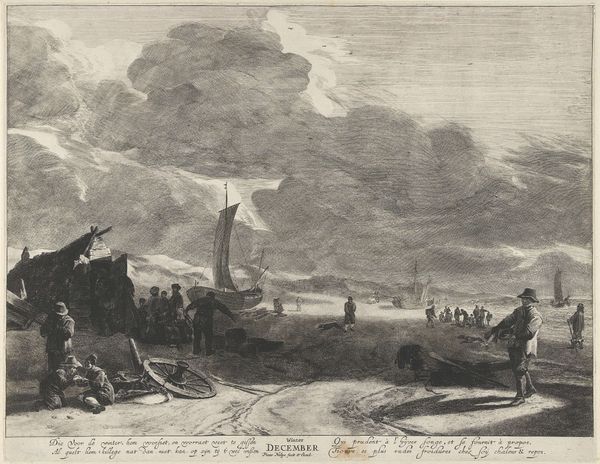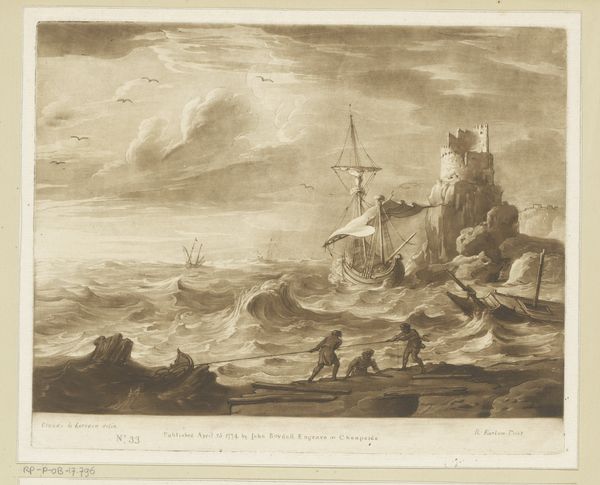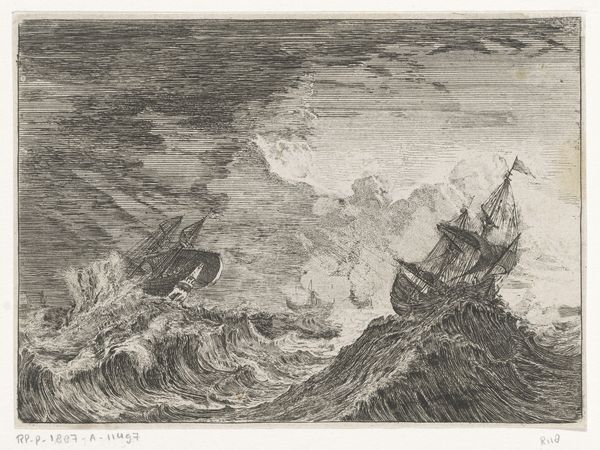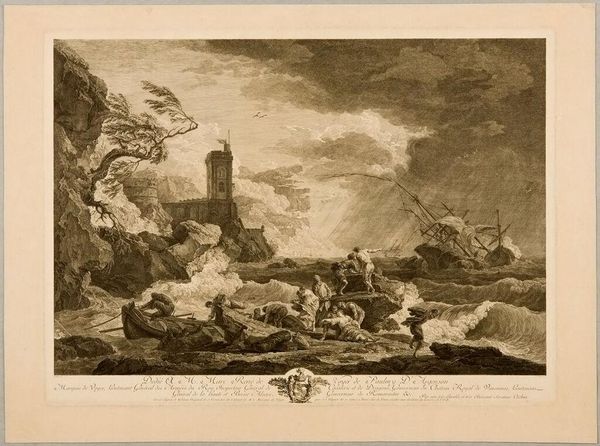
print, etching
#
narrative-art
#
baroque
# print
#
etching
#
landscape
#
cityscape
#
history-painting
Dimensions: height 405 mm, width 519 mm
Copyright: Rijks Museum: Open Domain
Curator: Before us, we have an etching made sometime between 1623 and 1653 by Pieter Nolpe. It’s called “Shipwreck: the Month of March and the Element Water.” Editor: Oh, goodness, it’s…intense. I can practically feel the icy spray just looking at it! So much turmoil visualized in monochrome. It almost feels apocalyptic. Curator: Indeed. Notice how the artist has structured the composition around diagonals that mimic the tumultuous waves and stormy skies. The receding lines and sharp angles convey a sense of instability and chaos, reflecting the raw power of the sea. The linear details add to the overall tension. Editor: Absolutely! And it's almost theatrical, the way the figures are positioned on those precarious rocks, like actors on a stage. They seem so small, so vulnerable, against the backdrop of nature’s overwhelming drama. One is flailing its arms in anguish. Curator: A crucial point. Their physical insignificance, framed by immense natural forces, implies vulnerability, emphasizing humanity’s limited power against nature's unbridled might. There’s a city in the top left corner overlooking it all. Is that meant to convey security or the futility of any presumed safety? Editor: Perhaps both. I wonder if Nolpe intended some socio-political commentary as well. The Dutch Republic was a major maritime power during this period. It makes you ponder on power, control and hubris. There is even a slight comedic feeling to the expressions on the minuscule figures in the artwork, but only slightly... Curator: Yes, and consider also the role of printmaking during this era. It made such scenes widely accessible, perhaps serving as cautionary tales, celebrations of resilience, or even political allegories disguised as landscapes. Editor: It really draws you into its narrative, doesn't it? What a way to spend a gray afternoon: contemplating humanity’s tenuous relationship with the elements. Curator: A somber reflection, to be sure. One appreciates Nolpe's rigorous etching skills, which add complexity and depth, despite the restricted tonal scale. Editor: A storm captured on a quiet piece of paper! There's magic in that, even centuries later.
Comments
No comments
Be the first to comment and join the conversation on the ultimate creative platform.
